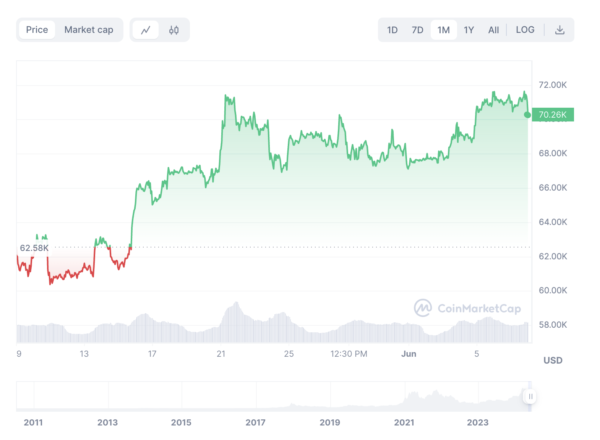ARTICLE AD BOX
Bitcoin’s price is still fluctuating around the $71,000 mark, and it is unable to break through its all-time high (ATH) of $73,738 set a couple of months ago. It rose to the current level a few days ago, before which it exchanged hands at less than $70,000. The price action has been slow despite a nineteen-day streak of growing BTC ETF inflows. Onlookers are wondering why bitcoin is not going past its recently set ATH despite raging ETF interest.

Spot BTC ETFs in the US and elsewhere currently account for over 5% of the bitcoin in supply, registering over $15 billion in inflows. Still, bitcoin prices are not increasing because of other factors. The ETF mania represents trends only in the US and a few other countries, which are too few to get bitcoin to rally on their own. ETFs must be provided to investors in various other markets to make the impact on the biggest crypto’s price that enthusiasts expect them to now.
Also, ETFs only represent one type of product. Others include futures and options, and all these products need to witness activity like ETFs to give a massive push to the underlying asset’s price. Bitcoin’s price also relies on geopolitical events and macroeconomic factors – something one must keep in mind before expecting price surges from a single factor like the ETF.
Another factor keeping bitcoin below its ATH is the liquidation it is going through by long-term holders who have held it for at least two years. They are selling the asset to realize gains, preventing bitcoin from rising rapidly.
Finally, the halving’s effects are yet to kick in, which may take until the end of this year. Historically, halvings have resulted in BTC prices rising to highs beyond prices recorded during previous bull runs. So, those expecting the halving to do its trick must wait a few more months to see how it affects prices.
The post BTC Needs a Lot More Than Its Current ETF Action to Move Past Its ATH appeared first on Live Bitcoin News.
.png)
 5 months ago
4
5 months ago
4








 English (US)
English (US)